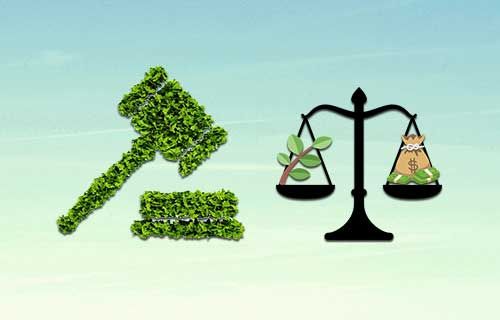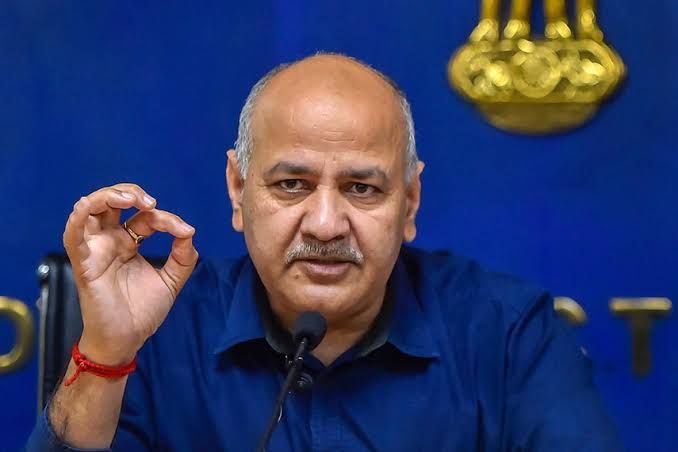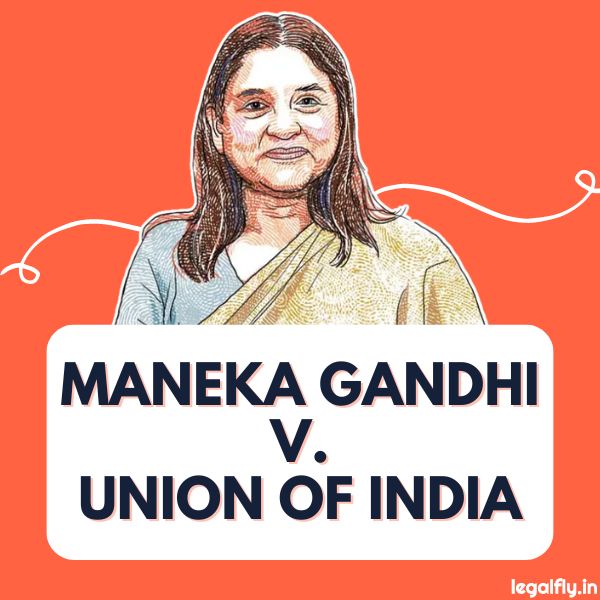Author: Aditya Kannoujiya, Integrated Law Course, Faculty of Law, Delhi University
To the Point
Environmental pollution in India has escalated to critical levels, threatening public health, biodiversity, and economic stability. As industrial activities intensify and urbanization expands, pollution levels in air, water, and soil have seen unprecedented rises. Recognizing this, India’s legal and judicial systems have adopted a proactive stance toward environmental protection. A significant trend in this battle has been the judiciary’s active role in shaping environmental policies through landmark judgments, the establishment of dedicated bodies like the National Green Tribunal (NGT), and adherence to key principles such as the polluter pays principle and the public trust doctrine. These legal instruments collectively aim to curb pollution while promoting sustainable development.
India’s approach to environmental law has seen progressive changes, blending traditional ecological ethics with modern legal principles to protect the country’s diverse ecosystems. This article examines recent trends in environmental jurisprudence, focusing on how legal innovations, case laws, and policy shifts are reshaping India’s approach to environmental conservation.
Use of Legal Jargon
To appreciate India’s approach to environmental protection, it’s essential to understand some of the legal terms commonly applied in environmental jurisprudence:
Polluter Pays Principle: This fundamental environmental law principle holds that those responsible for pollution should bear the costs associated with managing or rectifying its impact. It not only ensures accountability but also acts as a deterrent to potential polluters.
Precautionary Principle: This principle implies that in the face of potential environmental harm, lack of full scientific certainty should not be used as an excuse for inaction. It encourages preventive measures to minimize environmental risks.
Public Trust Doctrine: Originating from ancient Roman law, this doctrine posits that certain natural resources (like air, water, and forests) are held in trust by the government for public use and cannot be exploited for private gain.
Sustainable Development: This concept balances economic growth with environmental protection, ensuring that development meets present needs without compromising the ability of future generations to meet theirs.
Environmental Liability: This refers to the legal responsibility of an entity or individual for the environmental harm they cause. This can involve compensation, restoration, or remediation measures.
Public Interest Litigation (PIL): In India, PIL allows citizens or groups to file petitions on behalf of the public, especially in matters affecting public health and welfare. Environmental PILs have been instrumental in advancing environmental justice in India.
The Proof
Environmental pollution statistics in India reveal an urgent need for legal intervention. Studies show:
Air Pollution: India is home to 22 of the 30 most polluted cities globally, according to the World Air Quality Report. Hazardous pollutants such as particulate matter (PM2.5 and PM10) exceed safe levels in most urban areas, contributing to millions of premature deaths annually due to respiratory and cardiovascular diseases. Delhi, in particular, frequently records pollution levels that are multiple times higher than the World Health Organization’s safe limits, highlighting the scale of the crisis.
Water Pollution: Over 70% of India’s surface water is contaminated, largely due to untreated sewage, industrial discharge, and agricultural runoff. Major rivers like the Ganges and Yamuna have become symbols of pollution, despite being central to India’s culture and economy. Studies indicate that the Ganges is among the world’s most polluted rivers, largely due to the discharge of industrial waste, sewage, and religious offerings.
Soil Pollution: Industrial activity, improper disposal of hazardous waste, and the indiscriminate use of pesticides and fertilizers have severely affected the quality of soil across India. Soil pollution affects agricultural productivity, contaminates food sources, and disrupts local ecosystems, with long-term implications for public health and food security.
These alarming statistics underscore the need for an integrated legal and policy framework that addresses pollution across multiple domains, protecting both public health and the environment.
Abstract
This article delves into India’s legal and judicial responses to pollution. In recent years, India has witnessed the rise of progressive environmental jurisprudence characterized by high-profile court cases, establishment of specialized bodies like the NGT, and adoption of international principles such as the polluter pays and precautionary principles. While there are challenges, these legal developments represent a promising shift towards sustainable environmental governance, reflecting the judiciary’s increased role as an environmental steward.
Case Laws
The Indian judiciary has been instrumental in shaping environmental law. Some landmark cases that reflect the trends in environmental jurisprudence include:
MC Mehta v. Union of India (1988): This landmark case addressed pollution in the Ganges River, which is sacred to millions yet plagued by pollution from industrial discharge and urban waste. The Supreme Court mandated the closure or relocation of polluting industries along the river, setting a precedent for holding industries accountable. This case introduced both the polluter pays and precautionary principles, emphasizing the need for proactive pollution control measures.
Vellore Citizens’ Welfare Forum v. Union of India (1996): This case focused on pollution from tanneries in Tamil Nadu that had been discharging untreated effluents into water bodies, endangering public health and the local ecosystem. The Supreme Court reinforced the polluter pays principle, ruling that industries must bear the cost of environmental degradation they cause. This case established the precautionary principle as a cornerstone of Indian environmental law, compelling industries to adopt measures that prevent environmental harm, even if there’s no conclusive scientific evidence of risk.
Subhash Kumar v. State of Bihar (1991): In this case, the Supreme Court held that the Right to Life under Article 21 of the Indian Constitution includes the right to a clean and healthy environment. This judgment was instrumental in expanding the scope of Article 21, establishing that citizens have the right to unpolluted water and air, and that state inaction in this regard violates constitutional rights.
Delhi Air Pollution Cases (2002 onward): Delhi’s severe air pollution has led to a series of cases in which the Supreme Court and NGT have taken decisive steps to reduce pollution. These measures include restricting vehicle movement, mandating the use of cleaner fuels, and banning the use of firecrackers during certain festivals. These actions demonstrate the judiciary’s growing intervention in air quality management and its commitment to safeguarding public health.
Sterlite Copper Case (2018): Following a series of public protests against Sterlite Industries’ copper smelter in Tamil Nadu due to alleged environmental violations, the Tamil Nadu Pollution Control Board ordered its closure, a decision later upheld by the Madras High Court. This case highlighted the role of the judiciary in reinforcing industrial accountability and prioritizing community welfare over economic interests.
Goa Foundation v. Union of India (2014): The Supreme Court suspended mining activities in Goa to prevent further environmental damage, citing the public trust doctrine. The judgment stressed that natural resources, including minerals, should be preserved for future generations and cannot be exploited for immediate gain. This case underscored the importance of balancing economic activities with long-term environmental stewardship.
Conclusion
India’s judiciary has played a pivotal role in advancing environmental jurisprudence, acting as a custodian of the public’s right to a clean environment. Recent judgments reflect a commitment to enforce the constitutional right to life in a way that includes environmental protection. However, addressing environmental pollution requires not only judicial intervention but also robust regulatory frameworks, enhanced enforcement by governmental bodies, and increased public awareness. The judiciary’s proactive approach has set important precedents for sustainable development, but continued efforts in policy reform and environmental regulation are essential to mitigate the adverse effects of pollution.
FAQS
What is the National Green Tribunal’s (NGT) role in pollution control?
Established in 2010, the NGT is a specialized body that addresses environmental disputes. It has the authority to hear cases related to the violation of environmental laws, enforce environmental compliance, and impose penalties on violators. By expediting cases, the NGT ensures timely judicial intervention in environmental matters, upholding both national laws and international principles.
How does the “polluter pays” principle work in India?
The polluter pays principle holds that industries and individuals responsible for pollution must bear the cost of managing it. In India, this principle has been applied in cases like Vellore Citizens’ Welfare Forum v. Union of India and MC Mehta v. Union of India, where industries were made liable for environmental damage. The principle serves as both a deterrent and a means of compensating affected communities.
What rights do citizens have against environmental pollution?
Under Article 21 of the Indian Constitution, citizens have the right to a clean and healthy environment, which has been recognized as integral to the Right to Life. Citizens can file Public Interest Litigations (PILs) to seek judicial intervention when environmental degradation poses a threat to public health. Additionally, they can approach the NGT with complaints regarding environmental violations, promoting accountability and ensuring adherence to environmental laws.
How has environmental jurisprudence evolved in India?
Environmental jurisprudence in India has evolved from basic pollution control measures to the incorporation of international principles like sustainable development, the polluter pays principle, and the precautionary principle. Indian courts have expanded the scope of Article 21 to include environmental rights, and the NGT has emerged as a key institution in handling environmental disputes. Together, these developments reflect a judicial commitment to balancing economic growth with environmental preservation.






